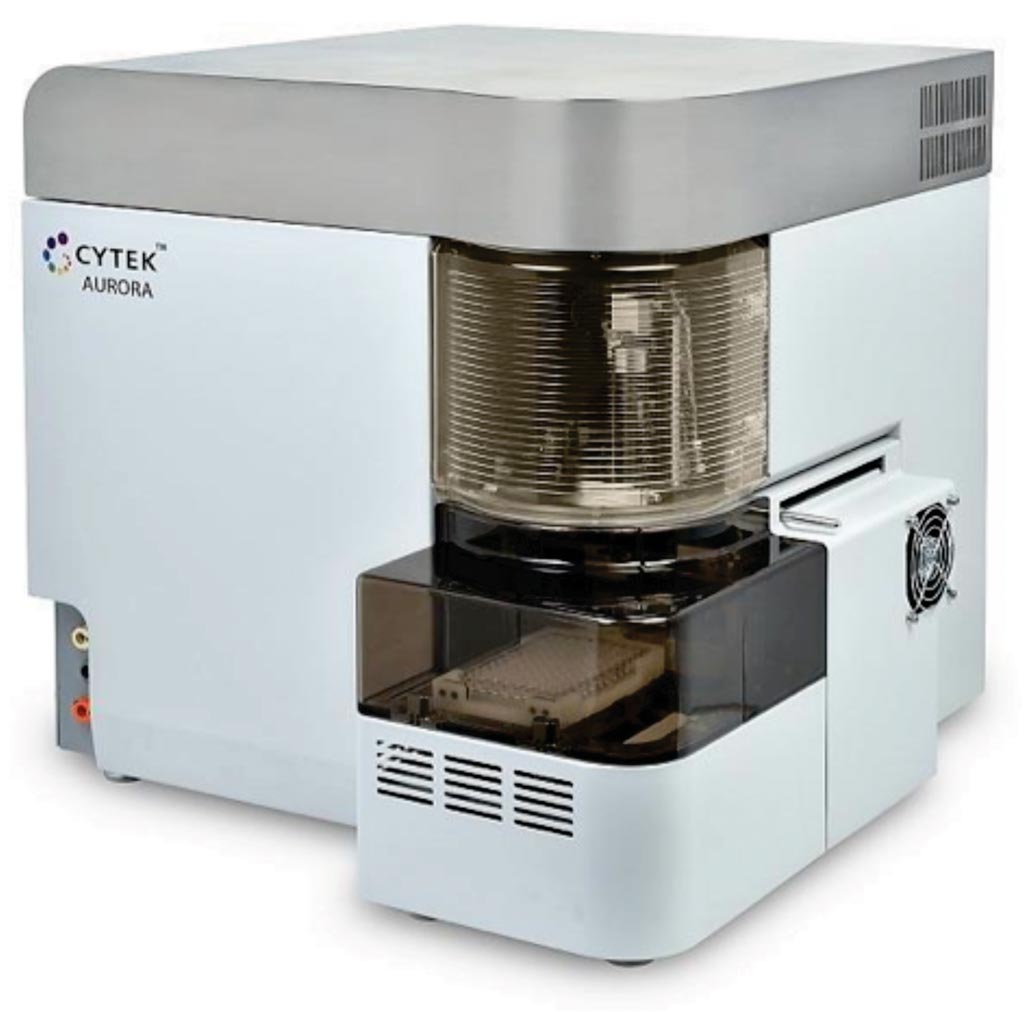Flow Cytometry Improved Updated Spectral Analyzer
By LabMedica International staff writers
Posted on 31 Oct 2019
Flow cytometry aims to count the number, size, granularity, and other properties of cells in a heterogeneous population. Standard flow cytometry lasers excite certain fluorescent markers (fluorochromes, antibodies, or stains) on a cell as it passes through the beam.Posted on 31 Oct 2019
Detectors in the instrument record and quantify the relative amount of light emitted by fluorescent markers in the cell, which the tool presents to scientists through a histogram. However, flow cytometer users can run into a myriad of technical issues, such as dealing with limited sample volumes and lacking enough lasers to excite a target amount of fluorochromes. Each laser also can only excite a certain number of fluorochromes on a cell before inducing spectral overlap.

Image: The Aurora advanced flow cytometry system is now available with five lasers to enable seeing more than 30 colors from a single sample (Photo courtesy of Cytek Biosciences).
An updated model of its Aurora flow cytometry system has been released by Cytek Biosciences (Fremont, CA, USA), which offers scientists the ability to multiplex 40 fluorescent biomarkers on a cell in a blood sample for scientific and clinical purposes. The updated Aurora platform uses five optical lasers (ultraviolet, violet, blue, yellow-green, and red) to excite 40 fluorochromes on cellular antibodies, which are then recorded by 64 detectors.
With standard flow cytometry panels, a patient's blood sample must be separated into multiple tubes to identify biomarkers linked to different types of leukemia; however the Aurora platform only needs a single tube of blood to identify the fluorescent antibodies. While scientists still need to run controls prior to running a multicolor tube to measure the different emission spectra recorded by Aurora, they can save the controls in the software and reuse them with the same panel in future tests.
Wenbin Jiang, PhD, CEO of Cytek Biosciences, said, “After chemotherapy, no one really has that many bone marrow samples available for testing and splitting into several different tubes. But because you don't need to split blood samples into several tubes with Aurora, you can have more cells per tube, which leads to more specific results." Dr. Jiang also argued that the updated Aurora system can analyze up to 30,000 to 40,000 cells per second while maintaining a "competitive sensitivity." Flow cytometry platforms on the market currently offer anywhere from 20,000 to 100,000 cells per second, but not always at the sample level of multiplexing.
Steven A. Porcelli, MD, scientific director at the Albert Einstein College of Medicine Flow Cytometry Core (Bronx, NY, USA), said, “Cytek's tool collected light coming out over a wide range of wavelengths for each cell and for each laser that we've used to excite the cell. Instead of giving you a high or low value for a tracer, it allows you to distinguish many different tracers from each other because you create a kind of fingerprint of the wavelengths being emitted.”
Related Links:
Cytek Biosciences
Albert Einstein College of Medicine Flow Cytometry Core















